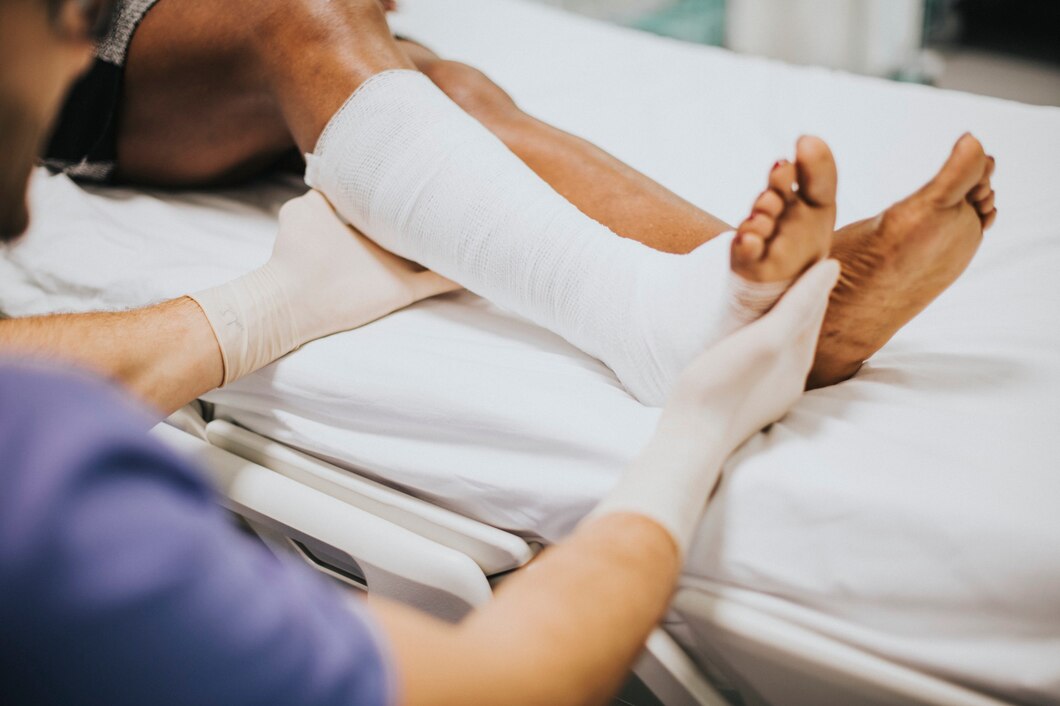You work for weeks on that bouldering problem. You’re almost made it to the top, you make it at the top, YES finally. You’re hanging an extra second on that last rock just enough time for someone to take a picture. You jump off the wall, I mean who even climb down these days… You land on the mat, but you land wrong, you fracture your right ankle, and just like that, you’re out for a few months!
Ankle fractures are not very common among rock climbers, but bad landings happen. I have seen a bunch in my career, especially in bouldering.
Here are the Different types of ankle fractures
- Lateral Malleolus Fracture: Broken fibula
- Medial Malleolus Fracture: Broker tibia.
- Bimalleolar Fracture: both tibia and fibula aka you did a great job…
- Trimalleolar Fracture: tibia but three different part… also good job
- Syndesmotic (High Ankle) Fracture: A break affecting the ligaments between the tibia and fibula.
What are the signs and symptoms
- Pain… A lot of it
- Swelling
- Inability to walk
- Bruising
How to diagnose
Your physio can perform the Ottawa ankle rules to detect if you need to go for an xray, which will give you a more definitive diagnostic
How to treat a fracture and get back to climbing
Protect:
After a severe ankle fracture, you might need crutches or even a cast for a couple days (or weeks). Your sports or orthopedic doctor will guide you on that subject. You also should ice in order to control the inflammation. Note that ultrasound treatments are not recommended anymore. You can also contact your doctors to ask about pain medication if required. Ny advice is to avoid anti-inflammatory because they might slow down healing.
Mobility
Your physiotherapist will use manual therapy techniques to restore your range of motion and your movement. If your treatment is virtual, they may guide you through online mobilization techniques. It could take a few weeks for your mobility to come back
Strengthening:
As we know, exercises are the brick and mortar of rehabilitation. You will have to get your strength back after fracture. You will work on ankle muscles, but also any other muscle that might help you prevent another injury. You will have to work on static and dynamic strength as well as power
Proprioception /balance
Probably the most important phase after any lower body injury, including ankle fracture. Most people don’t go through that phase because they are pain free. The thing is that the risk of injury will be super high if you don’t improve your balance and coordination. As a rock climber, it is crucial that you work on specific exercises that are related to your sports.
Return to sports:
The last stage is there for you to make sure you work on specific skills related to rock-climbing at this stage, you will restart training, but your risk will be slightly elevated compared to a non-injured athlete.
You will work on more complexes exercise involving the whole body. You should have full mobility, full strength, and great proprioception at this stage.
Other treatments can help manage pain from ankle fracture and improve recovery.
Unfortunately, surgeries are sometimes required. That will depend on your Xrays result. It is possible to go back to climbing after a surgery, the rehabilitation process will be longer so be ready to be patient.
Prognostic:
Most people will recover fully after an ankle fracture. But it might take 6 months to a year to be back to full duties at the climbing gym. A small percentage of people will not fully recover even after a year especially if no proper recovery treatments were
Why Choose Online Physiotherapy for Climbing Injuries?
With Virtualis Physiotherapy, climbers across Ontario can access the care they need from the comfort of their home… or even the climbing gym! If you are recovering from an ankle sprain or looking for preventing a new one, our evidence-based virtual physiotherapy programs ensure you get back to climbing has soon has possible.
Book an online physiotherapy session today at VirtualisPhysio.com and take the first step toward recovery!
Disclaimer
The health and medical information on this site is designed for educational purposes only. You should not rely on this information as a substitute for, nor does it replace, professional medical advice, diagnosis, or treatments. Consult your health care professional before making any decisions to your health. Call 911 in case of a medical emergency. If you have any concerns or questions about your health, you should always consult with a physician or another health-care professional.
